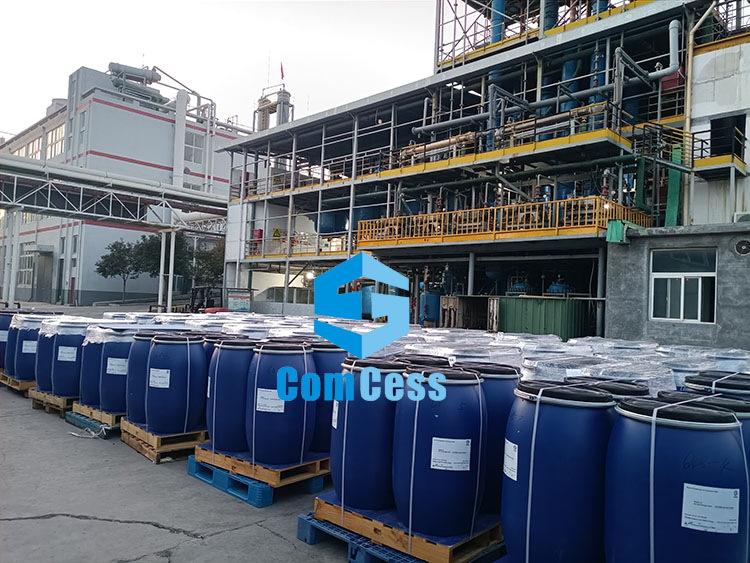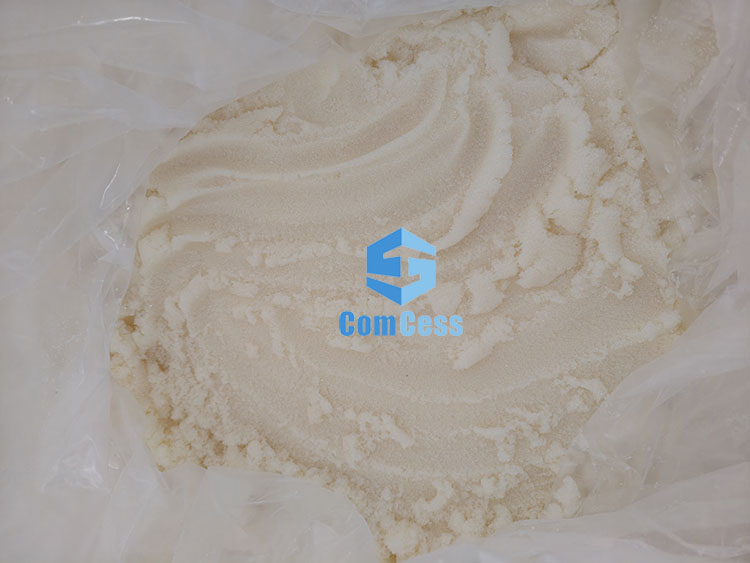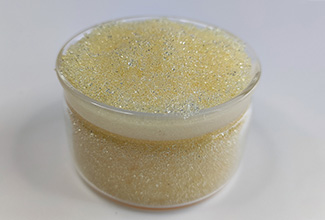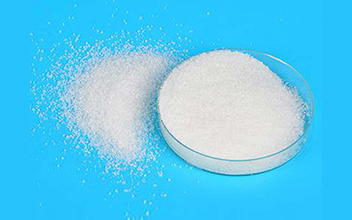How Particle Size Affects Uranium Adsorption Resin Performance
In modern uranium extraction processes, ion exchange resin plays a central role. Through ion exchange, it selectively adsorbs uranium ions from uranium-containing solutions, enabling uranium enrichment and separation. This serves as the critical link between uranium ore mining and subsequent purification and processing.
The fundamental mechanism involves functional groups on the resin framework exchanging with uranium ions in solution, immobilizing them on the resin. Subsequently, desorption operations elute the uranium ions, yielding a highly concentrated uranium-bearing solution.
The quality of the resin directly impacts uranium recovery rates. High-performance resins adsorb uranium more efficiently, minimizing losses during production. Among the numerous factors influencing resin performance, particle size distribution (PSD) is a critical yet often overlooked aspect in practical production planning and operations.
1.What is the Particle Size Distribution of Uranium Adsorb Resin?

The particle size distribution of uranium adsorb resin refers to the proportion of resin particles of different sizes within a given resin sample. It directly reflects the dispersion degree of resin particle sizes.
Currently, the primary methods for testing particle size distribution are sieve analysis and laser particle size analysis. The sieve analysis method classifies resin particles using a series of standard sieves with different apertures, determining the particle size distribution based on the mass of resin retained on each sieve. Laser particle size analysis, on the other hand, illuminates resin particles with laser light and calculates the particle size distribution based on the scattering characteristics of the particles. This method is characterized by its fast testing speed and high precision.
The common particle size range for uranium adsorption resins is typically between 0.3 mm and 1.2 mm. The particle size range may vary slightly for uranium adsorption resins produced by different manufacturing processes or intended for different applications, to accommodate specific uranium extraction process requirements.
A close relationship exists between resin manufacturing processes and particle size distribution. During resin polymerization, molding, crushing, and screening, the process parameters of each manufacturing step influence the final particle size distribution. For instance, polymerization temperature and duration, grinding equipment speed and force, as well as screen selection and operating protocols during sieving, all alter the size distribution of resin particles.
2. Why Is Particle Size Distribution So Critical?
In uranium extraction, the particle size distribution of uranium adsorption resin is paramount because particle size directly determines the equilibrium between adsorption kinetics and hydrodynamics.
Smaller resin particles possess relatively larger specific surface areas, enabling broader contact with uranium-containing solutions. This shortens the diffusion path for uranium ions to reach functional groups within the resin, accelerating adsorption rates and achieving higher adsorption capacities in shorter timeframes.
Conversely, larger resin particles create greater voids between particles as uranium-containing solutions flow through the bed. This reduces flow resistance, enhancing fluid dynamics while effectively lowering pressure drop across the resin bed and minimizing energy consumption.
Industrial production demands both rapid adsorption rates to enhance efficiency and favorable flow characteristics with low pressure drop to ensure stable operation and reduced energy consumption. This necessitates striking a reasonable balance between the properties of fine- and coarse-grained resins, achieving comprehensive production requirements through optimized particle size distribution.
3. Impact of Uranium-Adsorbing Resin Particle Size Distribution on Key Parameters In Uranium Extraction

The particle size distribution of uranium-adsorbing resin significantly influences multiple critical parameters in the uranium extraction process, specifically manifested in the following six aspects:
Mass Transfer Rate and Adsorption Kinetics
The hydrodynamic behavior of the resin bed is crucial for stable operation in uranium extraction processes, and resin particle size distribution significantly influences this behavior. I will streamline the language while retaining core points, highlighting the impact of different particle sizes and distribution patterns.
The hydrodynamic behavior of the resin bed is critical for stable operation in uranium extraction processes (especially fixed-bed processes). Key parameters include fluid flow state, distribution uniformity, and bed pressure drop, all of which are significantly affected by resin particle size distribution.
Resins with smaller particle sizes exhibit higher bulk density and lower bed porosity, creating substantial fluid flow resistance that causes a sharp increase in bed pressure drop. This not only elevates pump energy consumption but may also induce bed “compression,” triggering flow imbalances that reduce adsorption efficiency and potentially causing agglomeration blockages that halt the process.
When the particle size distribution is excessively broad, smaller particles fill gaps between larger ones, resulting in uneven bed porosity. Sudden local resistance spikes or excessive flow velocities create “short-circuit flow,” disrupting uniform solution-resin contact, reducing adsorption efficiency, amplifying pressure drop fluctuations, and increasing operational risks.
Resins with large particle sizes or uniform particle size distribution exhibit consistent bed porosity, low flow resistance, and stable pressure drop. This ensures uniform fluid distribution, facilitating efficient uranium adsorption.
Resin Bed Hydrodynamics and Pressure Drop
The hydrodynamic behavior of the resin bed (including flow state, distribution uniformity, and bed pressure drop) is crucial for the stable operation of fixed-bed uranium extraction processes, and the resin particle size distribution significantly affects these hydrodynamic parameters. Small-diameter resin particles result in high bed packing density and low porosity, leading to a substantial increase in flow resistance and pressure drop. This, in turn, increases process energy consumption, causes bed compression and flow deviation, and in extreme cases, may even cause resin agglomeration or bed blockage, interrupting process operation.
An excessively wide resin particle size distribution is also detrimental. The gaps between large particles are filled by smaller particles, resulting in uneven bed porosity and creating "short-circuit flow." This reduces uranium adsorption efficiency and exacerbates pressure drop fluctuations, affecting column flow stability. Conversely, large-diameter or uniformly distributed resin particles result in more uniform bed porosity, lower flow resistance, and more stable pressure drop, avoiding flow deviation and blockage problems and providing favorable hydrodynamic conditions for efficient uranium adsorption.
Uranium Loading Capacity of Resin
The uranium loading of a resin is a key indicator of its adsorption capacity, directly affecting resin utilization and uranium extraction process costs. While resin particle size distribution does not alter the theoretical adsorption capacity determined by the number of functional groups, it indirectly influences the actual uranium loading by affecting group utilization efficiency.
Small-diameter resins have a large specific surface area and short internal diffusion paths. Under short contact time conditions, functional groups can react more fully with uranium ions, resulting in a higher actual loading that is closer to the theoretical value, making them suitable for rapid processing of uranium-containing solutions. Large-diameter resins, although theoretically having comparable adsorption capacities, suffer from high internal diffusion resistance. Internal active sites are difficult to fully utilize within short contact times, resulting in a lower actual loading. Extending adsorption time or enhancing mass transfer is required to reach the theoretical value, increasing process costs. An excessively wide particle size distribution leads to differences in adsorption rates among particles of different sizes, causing a decrease in the average bed loading and impacting process economics.
Desorption Efficiency and Backwash Performance
Desorption and backwashing are critical stages in uranium extraction, significantly influenced by resin particle size distribution. Smaller particles desorb rapidly but are prone to loss; larger particles exhibit the opposite behavior. Uniform particle size also impacts the stability of desorption and backwashing. The following is an abridged summary:
Desorption and backwashing are pivotal steps in uranium extraction, with their effectiveness markedly affected by resin particle size distribution. Smaller resin particles exhibit shorter internal diffusion paths, allowing desorption agents to penetrate rapidly. This results in higher desorption rates, shorter processing times, and reduced material consumption. However, these particles are easily carried away by the fluid during backwashing or desorption, leading to resin loss, increased costs, and potential solution contamination. Larger resin particles face greater diffusion resistance during desorption, requiring higher flow rates or extended processing times, which increases energy consumption and time costs. Nevertheless, they demonstrate superior resistance to loss, thereby reducing operational expenses. Resin particle size uniformity is critical for desorption and backwash stability. Excessively broad particle size distribution can cause bed stratification during backwashing and significant uranium concentration fluctuations during desorption, impacting recovery rates. Uniformly sized resin exhibits consistent flow behavior, resulting in high desorption efficiency and stable uranium concentrations in the effluent.
Mechanical Strength and Wear Rate
Resin mechanical strength is closely linked to particle size distribution. I will examine the impact of different particle sizes and distributions on mechanical strength, articulating key points concisely.
Resin mechanical strength directly influences its service life and cycle endurance, while particle size distribution is intrinsically related to mechanical strength and wear rate.
Small-particle resins: Smaller particles have weaker skeletal impact resistance. During operations like conveyance and backwashing, they readily collide and rub against equipment and other particles, leading to fragmentation, wear, and powder generation. This increases bed resistance and causes pipeline blockages.
Excessively Wide Particle Size Distribution:
Significant velocity differences between large and small particles intensify relative motion collisions and friction. This accelerates wear rates for small particles while damaging the surfaces of large particles. It also creates uneven fluid shear forces within the bed, hastening resin fragmentation.
Large-sized or uniform-sized resin: High impact resistance, low wear rate during hydraulic operations, intact particles, and extended service life. Additionally, particle size stability impacts process costs—significant size variation leads to unstable bed performance, requiring frequent resin replacement and increasing operational expenses.
Liquid-Solid Separation Efficiency
In uranium extraction processes, resin particle size distribution directly affects uranium recovery rates and process stability. Specifically:
Fine-particle resins (<0.3mm): Due to their light weight and slow settling, gravity separation takes extended time. During filtration, they readily clog filter media, increasing resistance and reducing flow rates, necessitating frequent maintenance. Furthermore, fine particles easily suspend in solution causing turbidity, interfering with subsequent ion exchange and extraction separation, exacerbating uranium loss, and potentially contaminating the final product.
Large- or uniform-particle-size resins: Settle rapidly, filter smoothly, and deliver high, stable separation efficiency. Therefore, selecting resins with a particle size of 0.5–1.0 mm and strictly controlling the proportion of fine particles is crucial for ensuring efficient uranium extraction process operation.
4. Optimizing Resin Particle Size Distribution in Industry
In industrial uranium extraction, optimizing resin particle size distribution must closely align with process requirements and equipment conditions. Different uranium extraction processes impose distinct resin particle size requirements. For fixed-bed adsorption, larger-sized resins with uniform distribution are preferable to minimize bed pressure drop, while fluidized-bed adsorption may utilize smaller-sized resins to enhance adsorption rates. Additionally, the uniformity coefficient (UC) serves as a critical metric for evaluating resin particle size distribution uniformity; resin products with a low uniformity coefficient should be prioritized.
Simultaneously, resin particle size distribution must be adapted to engineering parameters such as tower design, solution flow rate, and solution viscosity. Tower structure influences solution and resin distribution, necessitating corresponding particle size adjustments. Higher solution flow rates require larger resin particles to reduce pressure drop, while lower flow rates benefit from smaller particles to increase adsorption rate. For high-viscosity solutions, smaller resin particles are more effective in enhancing uranium ion adsorption efficiency.
5. Conclusion
The particle size distribution of uranium adsorption resins is deeply intertwined with core parameters of uranium extraction processes. From mass transfer rates and resin bed hydrodynamics to uranium loading capacity, desorption efficiency, mechanical strength, and liquid-solid separation efficiency—all are significantly influenced by particle size distribution.
In industrial practice, achieving efficient uranium extraction requires striking an optimal balance between adsorption rate and flow performance. Precise screening of resin particle size, strict control of particle size distribution uniformity, and synergistic optimization of process parameters and equipment conditions are essential to ensure high recovery rates and stable operation in uranium extraction. This approach also effectively reduces production costs and enhances overall economic efficiency.
-
 201×7 Anion Exchange ResinAppearance: Light yellow to gold yellow transparency sphericity particles.The degree of crosslinking : 7%.Ionic form:Cl-
201×7 Anion Exchange ResinAppearance: Light yellow to gold yellow transparency sphericity particles.The degree of crosslinking : 7%.Ionic form:Cl- -
 High Water Absorbent Resin for Diapers Super Absorbent PolymerNontoxic, harmless, nonpollutingHigh water absorbent capacityRaw material
High Water Absorbent Resin for Diapers Super Absorbent PolymerNontoxic, harmless, nonpollutingHigh water absorbent capacityRaw material -
 Uranium Extraction Ion Exchange ResinPhysical Form: Opaque beadsIonic form: SulfateTotal Exchange Capacity (Cl− form) mmol/ml: ≥1.30
Uranium Extraction Ion Exchange ResinPhysical Form: Opaque beadsIonic form: SulfateTotal Exchange Capacity (Cl− form) mmol/ml: ≥1.30

